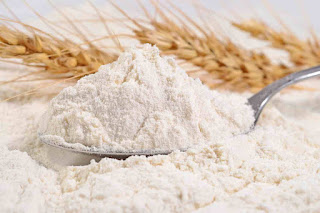Hello dear readers, and welcome to our blog at FreeAstroScience.com! Today, we share an eye-opening discussion on replacing refined white flour, known as plain flour," with wholesome alternatives. We crafted this guide to simplify science for everyone and to help you enjoy nutritious and tasty creations in your kitchen. Stay with us till the end to learn all the details that make a real difference in your daily cooking!
Understanding the Need for Alternatives
White flour (farina 00) is popular but lacks nutrients because it is stripped of the bran and germ. This process reduces vitamins, minerals, and fiber. In our research, we found that choosing whole or alternative flours can improve both nutritional content and flavor. You might wonder why you should consider these options. Besides a healthier profile, alternative flours offer unique flavors and textures that bring a new dimension to classic recipes.
The Top Whole and Alternative Flours
We explored various alternatives available today. Below, we provide details on each, along with practical tips on using them in your favorite recipes.
1. Whole Wheat Flour
Whole wheat flour is the simplest replacement. It retains the nutrient-rich bran and germ, providing more fiber, vitamin E, and B vitamins.
- Usage Tips: Replace farina 00 by 50–100%, but add extra liquid because it absorbs more water.
2. Chickpea Flour
Chickpea flour is commonly used in savory dishes such as panelle and farinata. Yet, it is also great for fresh pasta, gnocchi, and even sweet goods after proper heat treatment.
- Usage Examples: Try it in veggie burgers or as a coating for fried vegetables.
3. Farro Flour
This flour comes from ancient wheat grains, preserving valuable minerals and offering a hearty taste.
- Usage Tips: Ideal for breads, pasta, tarts, and biscuits.
4. Buckwheat Flour
Buckwheat flour is naturally gluten-free with a distinctive, slightly nutty flavor. It is packed with fiber, magnesium, and iron.
- Usage Example: Perfect for pancakes and rustic crepes; combine with other flours for better elasticity.
5. Oat Flour
Oat flour is low in calories yet high in fiber, which makes for a more filling meal.
- Usage Tips: Excellent for cookies, cakes, and even to thicken soups and vegetable creams.
6. Brown Rice Flour
A gluten-free option, brown rice flour works well in gnocchi, fresh pasta, and as a thickening agent in creamy recipes.
- Usage Tips: Use with starches such as potato or corn starch to improve texture.
7. Corn Flour
Corn flour is perfect for light tortillas, small flatbreads, and even succulent polenta dishes.
- Usage Tips: Naturally gluten-free and versatile for both savory and sweet dishes.
8. Barley Flour (Farina d’Orzo Integrale)
When processed using traditional stone grinding, barley flour offers rich minerals like calcium and potassium.
- Usage Tips: Best when blended with wheat flour to produce pasta or bread.
9. Chestnut Flour (Farina di Castagne)
Chestnut flour is gluten-free and ideal for making traditional cakes like castagnaccio and other soft, crumbly baked goods.
- Usage Example: Pair with farro or wheat flour to make pasta and bread.
10. Quinoa Flour
Quinoa flour, derived from a nutrient-dense pseudo-cereal, boasts high protein and essential amino acids.
- Usage Tips: Works well in bread, fresh pasta, and sweet baked goods when mixed with more robust flours.
11. Rye Flour
Often associated with dark, dense bread, rye flour can be mixed with other whole-grain flours for soft cakes and cookies too.
- Usage Tips: Use stone-ground versions where possible for the best flavor.
Balancing Your Recipe: How to Substitute plain flour
When you decide to substitute refined white flour, adjustments are important for balance:
- Hydration: Whole and alternative flours absorb more water. Increase liquids in your dough.
- Mixing: For breads, consider mixing 50% refined flour alternatives (like farro or rye) with a backbone flour that provides gluten.
- For Sweet Goods: Substitute 20–30% of farina 00 with alternatives like oat, chickpea, or chestnut flour.
Below is a simple table summarizing key points:
| Alternative Flour | Main Benefits | Recipe Uses | Note |
|---|---|---|---|
| Whole Wheat | More fiber & nutrients | Bread, cookies, cakes | Add extra liquid |
| Chickpea | High protein | Flatbreads, pasta, coatings | Heat treatment for dough |
| Farro | Ancient grain richness | Homemade pasta & bread | Maintains mineral content |
| Buckwheat | Gluten-free | Pancakes, crepes | Mix with binding flours |
| Oat | High fiber | Cookies, cakes, thickeners | Less calories, more filling |
| Brown Rice | Gluten-free | Gnocchi, batters | Combine with starch for structure |
Mathematically, if a recipe calls for 100 grams of farina 00, you might adjust water content as follows:
$$ \text{New Liquid Amount} = \text{Original Liquid} \times 1.1 ; (\text{if using 100% whole wheat}) $$
This formula is a guideline. Experimentation is key!
Real-World Success Stories
Many home cooks and professional chefs have reported that switching flours not only improves the nutritional value of their meals but also offers a unique flavor twist. For instance, blending buckwheat and oat flours has resulted in light, flavorful pancakes that satisfy both taste and health concerns. Such innovative approaches remind us that small changes in ingredients can lead to significant improvements in our overall diet.
Final Thoughts
In our journey to better health and taste, replacing farina 00 with nutritious alternatives is a smart, delicious choice. We shared practical tips and detailed insights to empower you with actionable knowledge. Our hope is that you'll feel inspired to experiment and enjoy the vibrant flavors that alternative flours bring to your table.
Thank you for reading this detailed guide by FreeAstroScience.com. We encourage you to share your experiences and ideas in the comments section. Your feedback helps us all learn and grow together in this evolving field of nutritional science.
Stay curious, stay healthy, and keep exploring!


Post a Comment